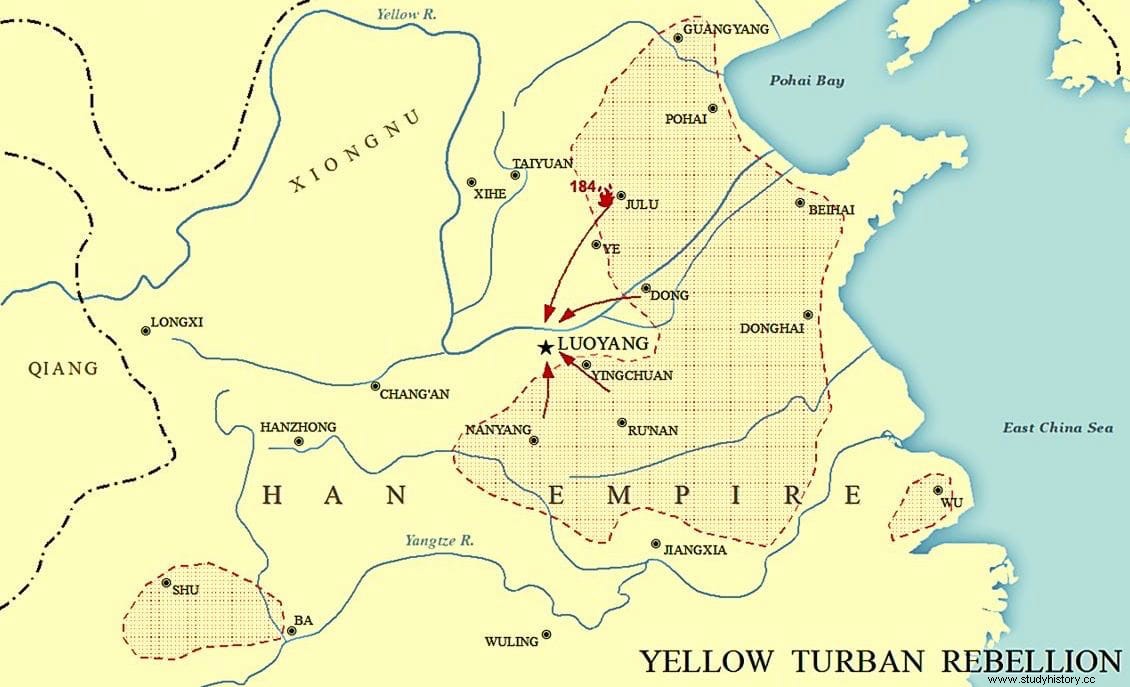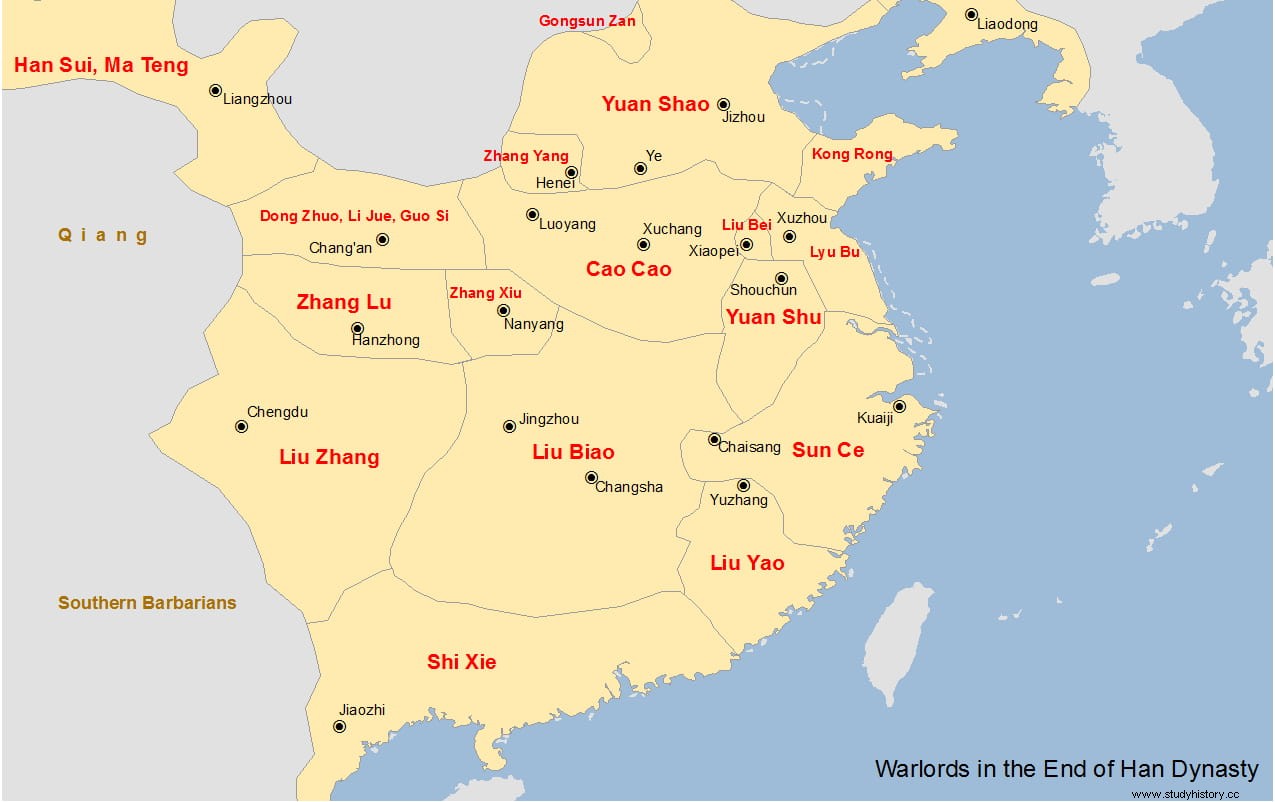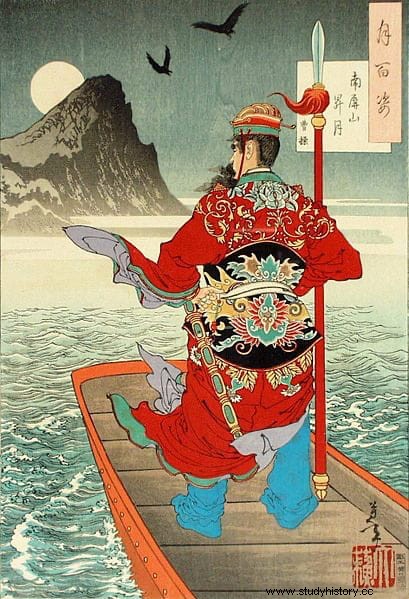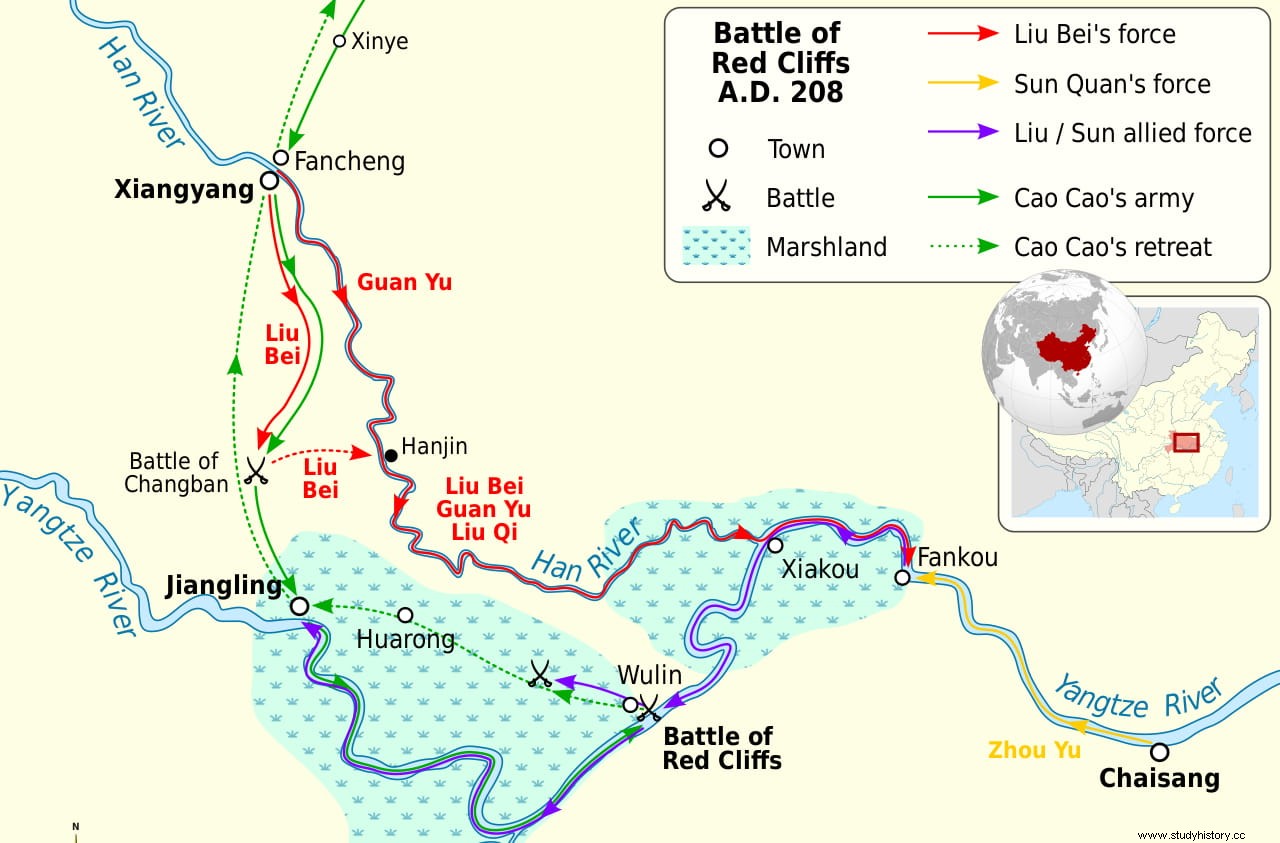Within the vast history of China, the figure of Cao Cao occupies a special place, due to his singularity. Someone who, after being one of the most outstanding prime ministers of the Han dynasty stage and undisputed protagonist of the period known as the Three Kingdoms, an expert in martial arts and a poet, could not be considered in any other way, would originate the future kingdom of Wei and would end appointed posthumous emperor under the name of Wu of Wei. Well, this man's tomb was discovered in 2009 but his body had not appeared... until a few days ago, when Chinese archaeologists found some mortal remains that they have identified as his.
Cao Cao was born in Qiao (what is now Bozhou) in AD 155. His family was under the protection of one of the most powerful court eunuchs, Cao Teng, who bequeathed his name to his father, who was apparently the cousin of two prestigious military men. Young Cao Cao soon showed a cunning coupled with a certain lack of scruples, something he was delighted to assume when a famous augur confirmed it to him, linking him to a bright future in politics if somewhat careless in war.
When he entered the army as a captain as an adult, he applied iron discipline to his troops without class distinctions, which led him to be sent to Yingchuan in 184 to suppress the so-called Yellow Turban Rebellion (a peasant revolt caused by a famine and of a Taoist character against the prevailing Confucianism). He complied with ruthless effectiveness, earning himself the appointment of Governor of Dong Commandery. He had been there several years before until his dismissal for having family ties with Empress Song, who had fallen into disgrace.

When Emperor Ling died five years later, the latent tensions between the military caste and the eunuchs, who along with the widow He were the ones who had power in the shadows, arose until then; against them Cao Cao wrote a report. The situation would lead to the assassination of some generals and even the overthrow of the heir by Dong Zhuo, governor of Liangzhou. Zhuo placed Xian Di, a puppet ruler, on the throne, but Cao Cao refused to accept the coup and after an unsuccessful attempt at negotiation he left the capital to settle in Chenliu and raise an army against the usurpers.
Thanks to the support of several warlords, the coalition managed to prevail over Dong Zhao, who was assassinated in the year 192 by his adoptive son, willing to take his place. China was involved in a civil war that, however, only manifested itself in regional disputes during which Cao Cao was increasing his power. Finally, two years later, he managed to settle in the court and manage Xian Di just as his opponent did before, wresting from him the position of head of the army and a noble title.

At the end of that first century another prestigious general, Yuan Shao, marched on the new capital, Xuchang, to free the emperor from the pseudo-kidnapping he was in. Yuan Shao had one hundred thousand men against whom Cao Cao could only oppose twenty thousand but with two advantages:one, the creation of the shijia , a hierarchical and well-trained military scale; another, who knew how to choose the terrain that best suited him for the battle, that of Guandu, next to the Yellow River, overcoming that numerical inferiority to obtain an unprecedented victory.
Shao, ill, died shortly after and the witness was taken by his sons, although they did not agree on the inheritance and Cao Cao skillfully took advantage of that dispute to defeat them separately and successively.
In this way he was freed from enemies and took absolute power in practice, although he never aspired to the imperial throne. But he did unify China. By taking over the northern part of the country, where he established an efficient agrarian system called tuntian , he also extended those domains beyond the border, always in the name of the emperor:to the north towards Korea and to the south across the Yangtze. That part was the territory of some rivals who, faced with the threat posed by Cao Cao, allied themselves and defeated him in the battle of Achibi, also known as Of the Red Cliffs.

He settled in the winter of the year 208 pitting the combined armies of Lords Liu Bei and Sun Qan against Cao Cao's. The exact point of the crash is unknown, although there is some unanimity that it was between the cities of Wuhan and Baqiu (present-day Yueyang). Cao Cao had numerical superiority, although his troops were not as many as he was responsible for spreading fear in the adversary (he said he had 800,000 men but historians believe they would be a quarter) and also many of them were of dubious fidelity, recruited from the forces of the defeated governor of Jing, Liu Bao. Opposite, the enemy opposed 50,000 troops.
A first meeting on the cliffs that give the episode its name, unexpected by both sides, was adverse to Cao Cao because his people had come from an exhausting march and many were sick. They had to withdraw to Walin, on the north bank of the Yangtze, but an enemy commander realized the difficulties they had in the operation as there were few sailors and, simulating a surrender, sent several fire ships against them causing a catastrophe. This allowed the allies to take advantage to launch the attack and obtain victory.
Cao Cao opted for retreat, which was disastrous because the rains had turned the fields into swamps and the soldiers got stuck in the mud, being easy prey for their pursuers or being crushed to death by their own comrades. Cao Cao, who had lost his best strategist, Guo Jia, before the war, did not willingly accept the responsibility for the defeat: "It was only due to illness that I burned my ships and retreated . It's out of the question for Zhou Yu to take all the credit for himself."
After that, in China there was a certain secular rivalry between the north and the south. However, despite everything, Cao Cao preserved his power and increased it by accumulating dignities and fiefdoms to the point that in 216 he was appointed King of Wei, one of the three states in which the Chinese territory was structured, originating the period known as the the Three Kingdoms:Wei, Shu and Wu. Entangled in mutual struggles, none was able to impose themselves on the others and in the year 220 Cao Cao died and was succeeded by his son Cao Pi, who deposed the last Han emperor and took his place, inaugurating a new dynasty. , the Wei. His late father was then made Emperor Wei posthumously. 
Cao Cao died in Luoyang at the age of 65 and was buried in Xigaoxue, Henan province, in an unknown place at his express will:on the day of his funeral, 72 coffins were buried in as many different places and the porters who carried them were executed. to guarantee secrecy. However, Cao Pi did not want his father to fall into oblivion and built him a large mausoleum that, despite everything, remained unharmed until its discovery because later he feared that thieves would loot the sepulcher and ordered the destruction of all architectural traces on the surface.
In 2009, some laborers were extracting mud to make bricks when the tomb appeared, large as befitted someone of its relief, about 740 square meters. A tablet inscribed with King Wu of Wei oriented on the identification of the site. The archaeological site provided two and a half hundred pieces including gold and silver work, ceramics, paintings, weapons and the like; another tablet was inscribed with the legend This is what King Wu of Wei used , referring to a sword and other objects that confirmed who the complex belonged to.
But the body was missing. The archaeologists had to continue digging slowly and patiently in that huge complex until at the end of March 2018, after finding an underground tunnel, they located a burial chamber with the mortal remains of a man in his 60s accompanied by two women. The initial skepticism with which the news was received has been silenced by the Provincial Institute of Cultural and Archaeological Heritage of Henan, which has confirmed the high probability that these remains correspond to Cao Cao. Not only that, but another male body that was also buried may be that of his eldest son, Cao Ang.
The authorities have reportedly begun construction of a local museum on the site itself to expose the tomb's contents to the public. They calculate that it can be inaugurated in three years.
